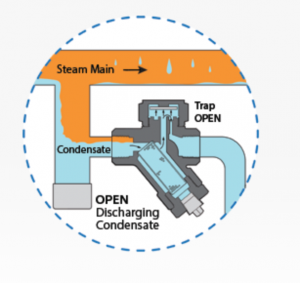What are common preventative maintenance schedules and checklists for a steam trap?
Preventive maintenance for steam traps revolves around the pressure ratings. Maintenance checklists include items about temperature, pressure, condensation and equipment functioning. Steam traps have automatic valves that allow steam to escape from a given space. Typically facilities and manufacturing plants use mechanical, thermostatic, or thermodynamic-by-nature steam traps.

Preventive Maintenance Schedules
The general rule for steam trap preventive maintenance is the higher the pressure, the more frequent the test. For example, high-pressure traps with rates greater than 250 psig should be tested daily. However, low-pressure traps with rates below 30 psig can be checked monthly or even annually. On average, steam traps are replaced every three to four years.
Preventive Maintenance Checklist
When maintenance technicians are inspecting steam traps, they should be paying attention to temperature, pressure, condensation and proper equipment operation. For example, a warm boiler room, incorrect temperature of conditioned space, or high energy bill can indicate steam trap failure. The pump water seal, boiler operating pressure, and vacuum in return lines should be checked as well.
Benefits of Steam Trap Preventive Maintenance
The benefits of preventive maintenance keep steam traps working properly, create a safer working environment, and save energy in your facility.
If a steam trap creates a backup of condensate within the system, it can affect the steam velocity. An improperly operating steam trap can increase the force of the water hammer and blow out a strainer or valve. This is a potential safety hazard as well as risk for further equipment damage.
Steam traps that are stuck open allow steam to escape continuously, wasting energy as long as this condition goes unrecognized. According to Industrial Controls, a steam trap that has not been maintained can cost thousands of dollars in lost energy per year.
Want to keep reading?
The Recommended Method of Documenting Preventive Maintenance
Types of Maintenance
Boiler Preventive Maintenance Program & Checklist
4,000+ COMPANIES RELY ON ASSET OPERATIONS MANAGEMENT
Leading the Way to a Better Future for Maintenance and Reliability
Your asset and equipment data doesn't belong in a silo. UpKeep makes it simple to see where everything stands, all in one place. That means less guesswork and more time to focus on what matters.

![[Review Badge] Gartner Peer Insights (Dark)](https://www.datocms-assets.com/38028/1673900494-gartner-logo-dark.png?auto=compress&fm=webp&w=336)
